Corymbia Tessellaris Tree
- March 19, 2024
- 0 comment
Corymbia tessellaris, commonly known as the spotted gum tree, is a species of tall eucalypt native to Australia. It belongs to the Myrtaceae family and is renowned for its attractive mottled bark, which gives it its distinctive appearance. The spotted gum typically grows in a variety of habitats, including coastal regions and hinterlands,
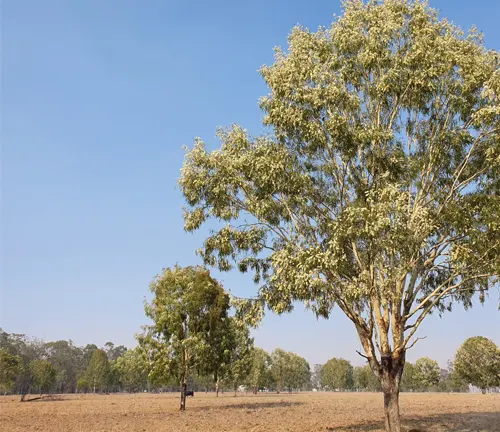
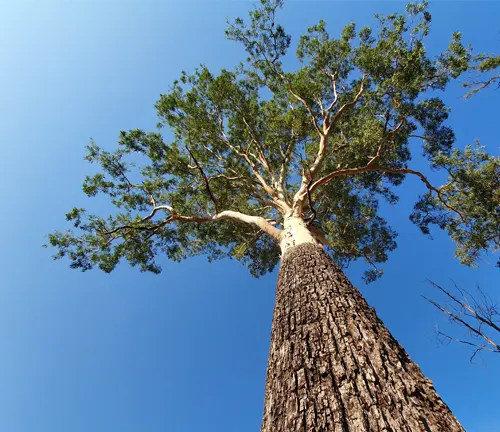
and can reach heights of up to 45 meters (148 feet). Its timber is highly valued for its durability and is used in various construction applications, including flooring, decking, and structural framing. Additionally, Corymbia tessellaris plays a vital role in Australian ecosystems, providing habitat and food for various wildlife species.
In Indigenous Australian cultures, the Corymbia Tessellaris tree holds significant cultural and spiritual value. It is often revered as a symbol of strength, resilience, and connection to the land, with various communities incorporating its symbolism into rituals and ceremonies.
These trees predominantly thrive in coastal regions of eastern Australia, favoring sandy soils and subtropical climates. They are often found in forests, woodlands, and along riverbanks, where they contribute to the region’s rich biodiversity.
Characteristic Corymbia Tessellaris Tree
| Scientific Name | Corymbia tessellaris |
| Common Names | Moreton Bay Ash, Carbeen |
| Family | Myrtaceae |
| Native Region | Coastal regions of eastern Australia |
| Plant Type | Evergreen tree |
| Size | Can grow up to 30 meters tall |
| Leaves | Dark green, lance-shaped leaves |
| Flowers | Creamy white flowers in clusters |
| Propagation | Typically propagated from seeds or cuttings |
| Drought Tolerance | Moderate to high drought tolerance |
| Cultural Uses | Significant cultural and spiritual importance in Indigenous Australian traditions |
| Ecological Role | Provides habitat for various wildlife species and contributes to ecosystem stability |
| Notable Species | Corymbia tessellaris is the most widely recognized species in the Corymbia genus |
| Hardiness Zones | Suitable for USDA hardiness zones 9-11 |
| Growth Rate | Rapid growth rate, reaching maturity within a few decades |
| Lifespan | Can live for several decades under favorable conditions |
Botanical Beauty of Corymbia Tessellaris Tree
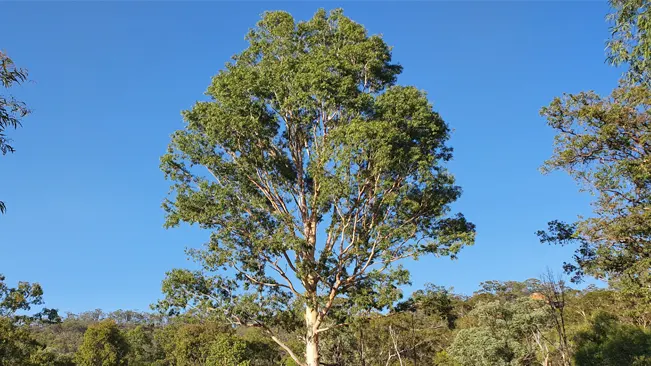
This tree is celebrated for its tall, straight trunk, which is covered with distinctive bark that peels away in large flakes to reveal smooth, new bark beneath. Its broad canopy, filled with dark green leaves, starkly contrasts the sky, enhancing any landscape with its picturesque appearance.
Woodland Elegance
In woodland environments, the Corymbia Tessellaris tree stands out with elegance, adding a refined natural beauty. Its majestic stature and architectural form draw attention, whether it’s amidst a forest backdrop or along riverbanks.
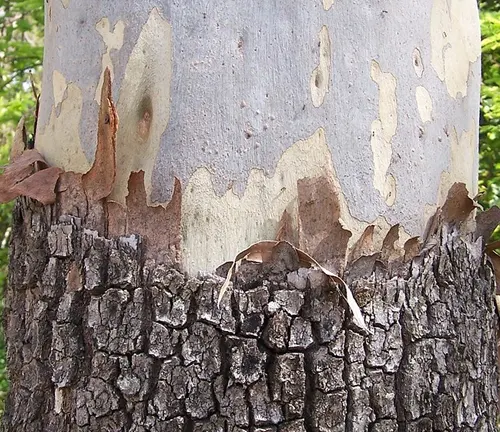
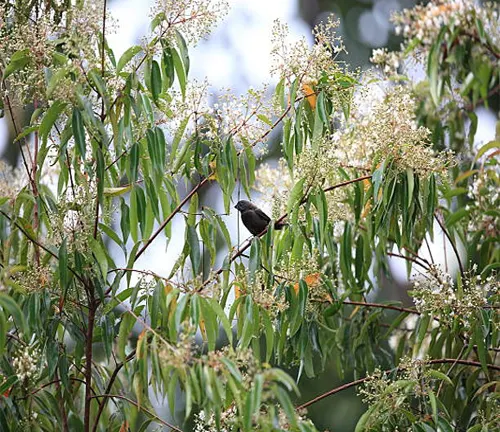
Ecological Importance
The Corymbia Tessellaris tree is crucial for ecosystem diversity, acting as a keystone species in its native habitat. Its canopy offers shelter and shade to various species, and its flowers are key in attracting pollinators, thereby supporting biodiversity.
Cultivation and Conservation
These trees are adaptable to well-drained soils and sunny locations, making their cultivation relatively straightforward. However, they face threats from habitat loss, urbanization, and climate change, highlighting the need for conservation efforts to ensure their survival.
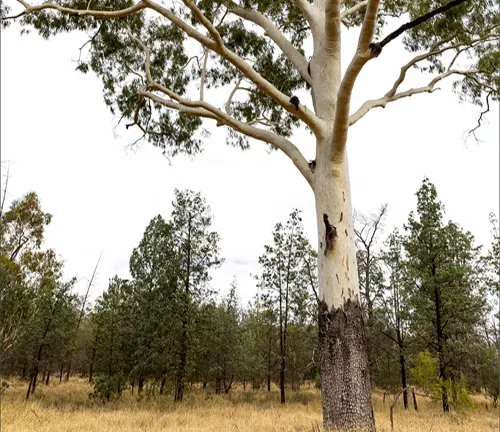
Fragrance
The flowers of the Corymbia Tessellaris emit a subtle, sweet scent that not only adds to the tree’s charm but also attracts vital pollinators like bees and butterflies, underscoring its role in ecological health and biodiversity.
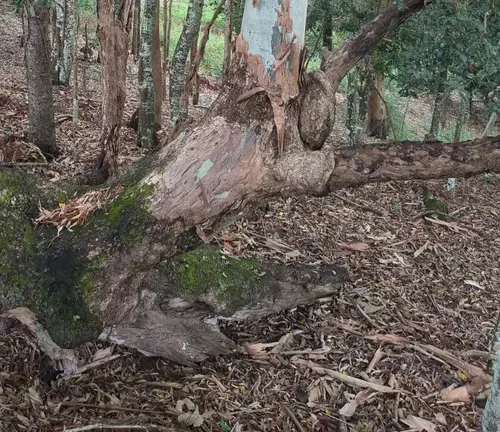
Soil Stabilization
With their extensive root systems, Corymbia Tessellaris trees play a significant role in stabilizing soil, preventing erosion, and combating soil degradation, thus proving essential in land restoration and anti-desertification projects.
Common Uses
The wood of Corymbia Tessellaris is prized for its strength, durability, and resistance to decay, making it a preferred material in construction, furniture making, and other woodcrafts, reflecting its practical utility across various sectors.
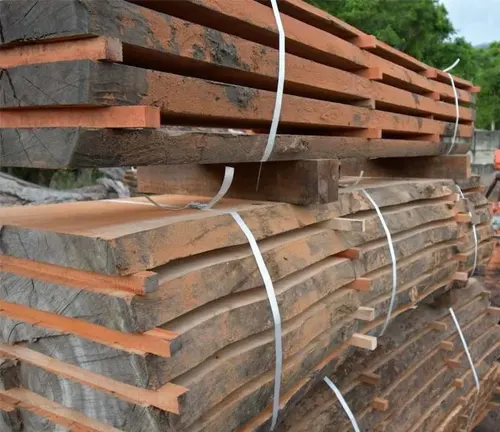
Benefits
Beyond their commercial and ecological significance, Corymbia Tessellaris trees provide myriad benefits including shade, wildlife habitat, soil quality improvement, and air quality enhancement, thereby contributing to the health of ecosystems and human communities.
Different Species
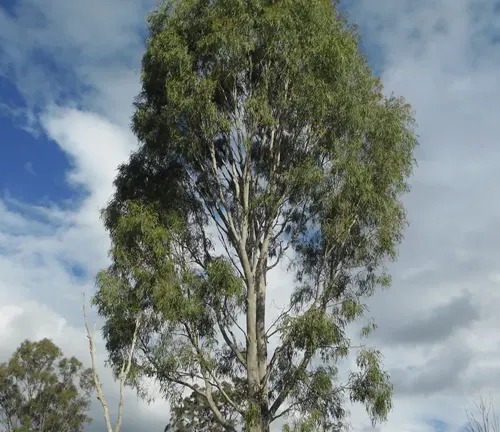
Corymbia tessellaris subsp. tessellaris
This subspecies is the most widely distributed and commonly encountered form of Corymbia tessellaris. It is native to coastal areas of Queensland and New South Wales in Australia.
Corymbia tessellaris subsp. cirrosa
This subspecies is found in northern Australia, particularly in the Northern Territory and parts of Western Australia. It is known for its distinctive rough bark and dense crown.
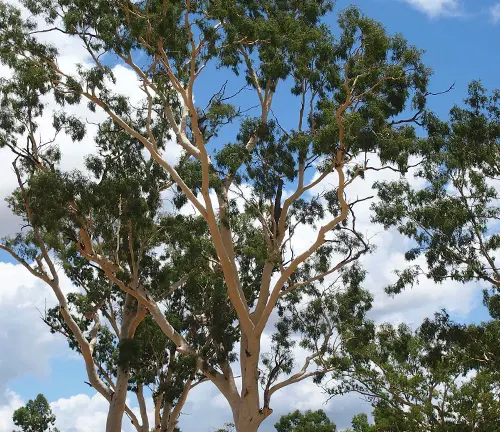
Frequently Asked Questions (FAQs)
- What is Corymbia tessellaris?
- Corymbia tessellaris, commonly known as the Moreton Bay Ash or Carbeen, is a species of tree native to coastal regions of eastern Australia.
- What are the characteristics of Corymbia tessellaris?
- Corymbia tessellaris is characterized by its rough, tessellated bark, lance-shaped leaves, and creamy-white flowers arranged in clusters.
- Where does Corymbia tessellaris grow?
- Corymbia tessellaris is found in coastal areas of Queensland, New South Wales, and northern Australia, where it thrives in sandy soils and subtropical climates.
- How tall does Corymbia tessellaris grow?
- Corymbia tessellaris can reach heights of up to 25-30 meters (80-100 feet), with a broad, spreading canopy.
- Is Corymbia tessellaris drought-tolerant?
- Yes, Corymbia tessellaris is known for its excellent drought tolerance, making it well-suited to dry, coastal environments.
- Does Corymbia tessellaris attract wildlife?
- Yes, Corymbia tessellaris provides habitat and food for various native fauna, including birds, insects, and mammals.
- How fast does Corymbia tessellaris grow?
- Corymbia tessellaris has a moderate growth rate, with young trees establishing quickly in suitable growing conditions.
- Is Corymbia tessellaris suitable for urban landscaping?
- Yes, Corymbia tessellaris is commonly used in urban landscaping due to its attractive appearance, tolerance to coastal conditions, and relatively low maintenance requirements.
- Are there any pests or diseases that affect Corymbia tessellaris?
- While Corymbia tessellaris is generally resistant to pests and diseases, it may be susceptible to issues such as scale insects and fungal infections under certain conditions.
- How can I propagate Corymbia tessellaris?
- Corymbia tessellaris can be propagated from seeds or cuttings, with seeds being the most common method of propagation. Seeds should be collected from mature fruits and sown in well-drained soil.


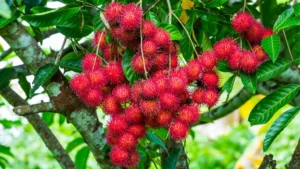
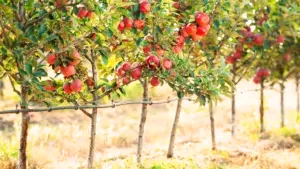

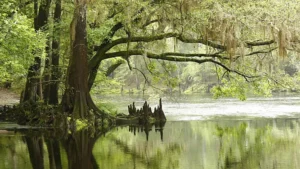
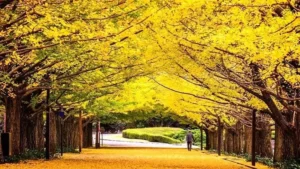

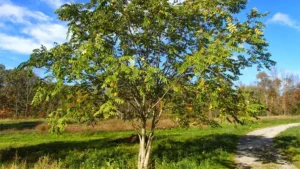

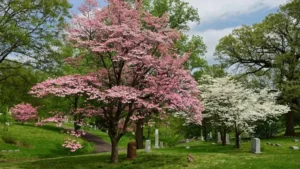
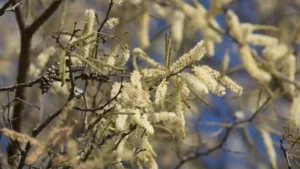

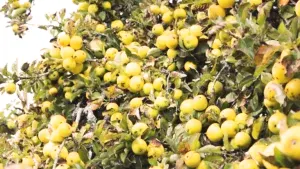
Leave your comment